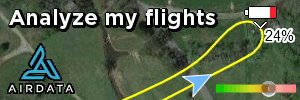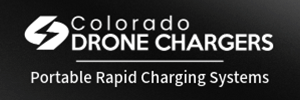I ASKED ARTIFICATE INTELAGENT (AI) ABOUT BATTERIES RUN TIME COMPARED TO CHARGE TIME, AND THIS IS WHAT AI SAID:
AI, EXPLAIN PLEASE:
ME:
I HAVE MULTIPLE BATTERIES INCORDLESS OBJECTS. FOR EXAMPLE, A DRONE FLIES FOR 30 MINUTES, BUT IT TAKES AN HOUR PLUS TO CHARGE IT.
A CORDLESS TRIMMER RUNS 25 MINUTES BUT CHARGING TAKES TWO PLUS HOURS.
WHY IS CHARGING LONGER THEN RUN TIMES??
Why Charging Takes Longer Than Run TIMES:
1. Energy Transfer Speed Is Limited by Safety
Charging a lithium-ion battery too fast risks overheating, swelling, or even fire.
Manufacturers cap the charge rate to protect the battery and extend its lifespan.
Discharging (using the tool) happens much faster because the energy is being spent, not stored.
2. Battery Chemistry Prioritizes Longevity
Most cordless tools use Li-ion or Li-polymer cells.
These chemistries prefer slower, controlled charging to avoid degrading the internal structure.
4. Smart Charging Phases
Let’s say your drone uses a 3S 2200mAh LiPo battery:
AI, EXPLAIN PLEASE:
ME:
I HAVE MULTIPLE BATTERIES INCORDLESS OBJECTS. FOR EXAMPLE, A DRONE FLIES FOR 30 MINUTES, BUT IT TAKES AN HOUR PLUS TO CHARGE IT.
A CORDLESS TRIMMER RUNS 25 MINUTES BUT CHARGING TAKES TWO PLUS HOURS.
WHY IS CHARGING LONGER THEN RUN TIMES??
Why Charging Takes Longer Than Run TIMES:
1. Energy Transfer Speed Is Limited by Safety
Charging a lithium-ion battery too fast risks overheating, swelling, or even fire.
Manufacturers cap the charge rate to protect the battery and extend its lifespan.
Discharging (using the tool) happens much faster because the energy is being spent, not stored.
2. Battery Chemistry Prioritizes Longevity
Most cordless tools use Li-ion or Li-polymer cells.
These chemistries prefer slower, controlled charging to avoid degrading the internal structure.
- Fast charging shortens battery life—so most devices avoid it unless they’re high-end or have active cooling.
3. Power Draw vs. Power Refill
- But the charger might only supply 20–50 watts to refill it.
- It’s like draining a bathtub with a firehose, then refilling it with a garden hose.
4. Smart Charging Phases
-
- Constant Current (fastest)
- Constant Voltage (slows down)
- Trickle/Top-off (very slow)
- The last 20% of charge can take nearly as long as the first 80%.
? Real-World Example: Drone Battery
Let’s say your drone uses a 3S 2200mAh LiPo battery:
- Flight time: 30 minutes at high power draw
- Charger output: 2 amps at 12.6V = ~25 watts
- Charge time: ~1.5 hours due to safety throttling and top-off phase
360 GUY
Last edited:








